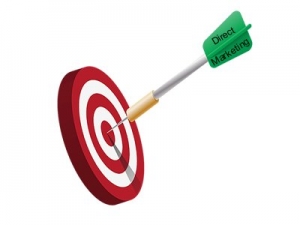 Among all the business to business marketing methods used today, direct mail remains one that fulfills all requirements of a successful campaign. Properly designed and sent to the right people, direct marketing grabs attention, builds both brand recognition and trust and converts a targeted business audience into new customers and clients at a higher rate than most other contacts. The 2015 Direct Mail Association reports an up to 3.7% conversion rate with physical mailers as opposed to an approximate 0.1% with email contacts. Getting those numbers in your B2B advertising campaigns depends on a lot more than making a great offer. These 7 tips can help.
Among all the business to business marketing methods used today, direct mail remains one that fulfills all requirements of a successful campaign. Properly designed and sent to the right people, direct marketing grabs attention, builds both brand recognition and trust and converts a targeted business audience into new customers and clients at a higher rate than most other contacts. The 2015 Direct Mail Association reports an up to 3.7% conversion rate with physical mailers as opposed to an approximate 0.1% with email contacts. Getting those numbers in your B2B advertising campaigns depends on a lot more than making a great offer. These 7 tips can help.
Tip #1 – Determine the Real Reason for a Business to Business Marketing Contact
When asked why a company wants to send an offer to another, the knee-jerk response may be to gain a new customer or client and make more money. While that is the ultimate goal of all business, a direct marketing mailer should not necessarily focus on sparking a sale. A very small percentage of initial contacts result in a sale or contract, although direct mail can help increase that rate.
The reason for a particular contact can be one of many things: introducing the company or its products and services for the first time to build awareness, increasing trust and recognition in the industry, getting callbacks or other contacts for more information, encouraging newsletter or social media signups, improving website traffic or, yes, actually making a sale or landing a new contract. If you do not know the precise goal with the business to business marketing campaign, it will be impossible to design it effectively.
Tip #2 – Identify Your Precise Target Market and Best Audience
Once you know why you want to send a letter or postcard, determine the perfect recipient who will be most likely to take action on your marketing message. In B2B marketing, this is frequently a company owner, CEO, purchasing department or another department that handles whatever product or service you offer. It is the decision maker or the person who directly influences the decision makers.
While a quality professional list provider like Bethesda List Center will provide information for the most important contacts in a particular industry or business type, you still need to know which list to buy or rent. Who is most likely to respond favorably to your offer? Who has the power to make a buying or hiring decision? Who can best influence higher-ups in the company to take action on your offer?
Tip #3 – Use the Most Correct, Targeted and Up-to-Date Direct Mail Lists
Once you identify your perfect audience, source contact information lists that closely match. Since the campaign pertains to business to business direct mail use a list with the physical mailing address for the people who can make decisions about doing business with new companies.
Always investigate how current and how correct a list is before you buy or rent it. The information should be checked on a regular basis and out of date or incorrect data should be removed.
Tip #4 – Grab the Right Kind of Attention
Most mail room clerks can spot junk mile easily and it often gets weeded out before it even gets anywhere near the target audience’s office. Business to business contacts need a level of professionalism that cannot be found on a neon-colored, clip art cartoon postcard with giant bubble letters saying, “Call Now!” Graphics can definitely help catch the eye, but they must work with the message you are trying to convey. Possibilities include your company logo, a neat chart or graph of benefits, a photo of your company location or team or images that symbolize the industry or niche.
The type of mailer your company chooses for its direct marketing campaign depends largely on your offer, the recipient and how much you want to spend on mailing each piece out. A postcard may work well for one industry while another would get more attention from a thick, cream-colored envelope with high-style printing.
Tip #5 – Stick to Facts, Not Emotion for Business to Business Marketing
Companies do not make purchasing or contract decisions based on how happy or confident the product or service makes them feel. When designing a direct marketing piece such as a postcard or letter include facts and statistics that show exactly how your business can benefit theirs. Companies are concerned with their profits and success, not some feel-good description.
Since the available area and word count in a mailer is limited, include data that works with the precise reason you are sending the piece to begin with. If you want website visitors, tell why going to your website will benefit them in some actual way. If you want telephone contact, reveal what you are prepared to offer them and why.
Tip #6 — Make Taking Action Easy and Obvious
Following Tip #1 and figuring out exactly what action you want the recipient to take leads you to this point. People respond more when told precisely what to do in the realm of direct mail advertising methods. Do not mix suggestions to visit a website or pick up the phone into the text of the letter or brochure without also including a clear directive at the bottom of the piece.
If you wish to encourage business contacts to visit your website, include something like, “To learn more about how we can save you 25%, visit ‘the website URL’ today.” Not only does this give a clear instruction how to contact you best, it also creates immediacy with the “today” and reminds them of the very real benefit of saving money. The same format works to make direct sales, sign up for newsletters and calling on the phone.
Tip #7 – Track and Analyze Campaign Successes and Failures
Design multiple mailers and include a unique code on each type that will automatically keep track of which one prompted the contact. This can be done by using alternate website pages or different extensions on your business phone line. Whatever technical method you choose, the resulting data can be analyzed over time to help your company design more effective business to business direct mail pieces in the future.
 Even the most highly-targeted and professionally designed direct mail marketing mailer might not give your company the return on investment it wanted. Instead of simply scrapping the campaign and trying to rebuild it from scratch, integrating the ability to track and analyze each one will give much more information about what works and what does not. This can save your company money, time and a lot of headaches in your quest to increase your business to business customer or client list.
Even the most highly-targeted and professionally designed direct mail marketing mailer might not give your company the return on investment it wanted. Instead of simply scrapping the campaign and trying to rebuild it from scratch, integrating the ability to track and analyze each one will give much more information about what works and what does not. This can save your company money, time and a lot of headaches in your quest to increase your business to business customer or client list.

